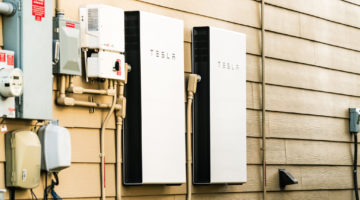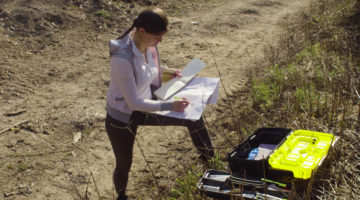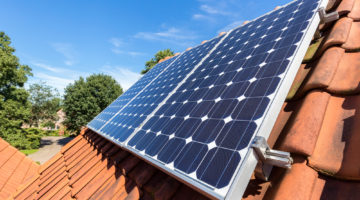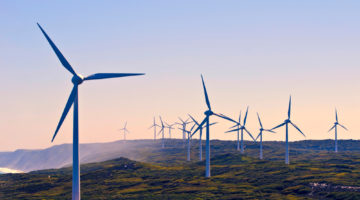
UPDATE: The Feed-In Tariff is now closed for new applications. To find out about the new scheme designed to replace it, click here.
Solar energy has been used for centuries, since glass lenses were first used to make fire by magnifying the sun’s rays in the ancient world. Radiant heat and light from the sun can be harnessed and converted into electricity, used for lighting, hot water and heating. Here, we’ve put together everything you need to know about solar energy.
How does solar technology generate electricity?
Put very simply, photovoltaic (PV) modules are made partially from a semiconductor, which acts as an electrical field, positive on one side and negative on the other. When light energy hits this, electrons come loose from the protons in the semiconductor. Conductors attached to the positive and negative sides form an electric current.
What are the benefits of solar power?
• It’s renewable; installing solar panels is a great way to reduce your carbon footprint.
• It’s free! If you can get some of your electricity from solar, you will save money on your electricity bills.
• You do not need to adjust them, or turn them on and off.
• There are no costs involved other than the original purchase of equipment, as they need little maintenance.
• It does not produce any pollutants, so is not harmful to people or the planet.
• Unlike most other forms of electricity generation, it produces no noise pollution
• If used with battery backup, solar electricity can be available 24/7
• It is a fairly reliable source (although obviously relies on the presence of some sunshine)
How long do solar PV systems last?
Most are guaranteed for 20-25 years. Some newer models are expected to last 40 years+. However, the system will not always be able to produce as much electricity as when first installed. The efficiency will reduce over time, as the cells begin to deteriorate. Some studies have shown a decrease in output of just 0.2% per year, after an initial drop of 5% or so in the first year. This isn’t a huge amount, and if well looked after, your solar panels could still be very much worth having long after the guarantee has run out!
On grid
Fitting solar panels on your roof is an easy and worthwhile energy efficiency measure. Once you have the equipment, you are generating energy for free!
What will I need?
We can supply you with the main elements of a solar PV (solar photovoltaic) system. We have a range of panels to suit individual needs. You will need an inverter, which changes electrical currents from DC to AC, which can be used in the home. We also sell batteries to store energy you do not use straight away.
Is it worth the money spent on equipment?
The Feed-in Tariffs scheme (FITs) introduced by the government is a financial incentive. Put simply, your energy supplier will pay a set rate for each unit (kWh) of electricity generated. Energy you do not use is fed back into the grid and you also get paid for this. It is worth noting that recent changes to the Feed-in Tariff mean rates of pay have considerably reduced. However, any electricity you do not use instantly can be stored in a battery. Solar PV can be expensive to install, but they pay for themselves in the long run, with the FITs and the money they can save on your energy bills.

Obviously the larger the system you install the more electricity it will produce. The average solar PV installed in the UK now is 3.5KW, which at 90% will produce approximately 3150kWh of electricity (depending how much sun you get in your part of the country). As reference an average house uses approximately 4,800kWh. The number of panels you can install will probably be limited by either the amount you can afford or the size of your roof. Suppliers will also charge different prices for their installation services and it’s important to ensure they are MCS accredited to qualify for the Feed-in Tariff.
How is electricity stored?
A battery is connected to the electricity system following the solar PV installation. When the sun is shining during the day, the battery is trickle charged with the excess electricity produced. Basically even if you are away from the house, you have background appliances like fridges, electrical appliances and so forth that are always on and using a certain amount of electricity.
In theory, the battery is trickle charged for the evening when the occupiers return home from work ready to operate all their appliances. If the storage capability is large enough on the battery system, there should be enough back-up to power the appliances for the rest of the evening.
Off grid
Off-grid electricity produced by panels (foldable or portable, as opposed to solar PV roof systems) is stored by a battery.
What size panel do I need?
An average 25w halogen light on for 3 hours will need around 75Wh of energy, a radio on for 2 hours will need around 50Wh, whilst a small 12v colour TV will use around 90Wh to run for two hours. You can see that if you have a caravan with a number of these appliances, and want to run them all evening, you will need several hundred Wh of power.
How much energy will I produce?
A 100W panel on a bright summer’s day will produce around 600Wh of power, whilst a 660W hybrid (solar and wind turbine) system could produce around 4,000Wh. A small 30W panel is going to produce around 200Wh.
What if the sun does not shine?
In winter, you will probably produce far less energy – A 100W panel will only produce around 80Wh on an average winter day- but unless you are hardy enough to go camping in the winter you will use less too! If you need to produce energy all year round, a hybrid system might work for you. This is a mini wind turbine and solar panel combined. On average this will produce more energy than a solar panel alone in winter.
What battery do I need?
It is not as simple as just buying the biggest battery. A large battery can store more energy, but the quality of the battery is just as important. Batteries lose charge when not in use, so make sure rate of loss is not too high (an average rate is around 3% per day). Another thing to bear in mind is the number of ‘cycles’ (charges) before charge falls significantly. Ours can be charged around 500 times.
The size of the battery required will be relative to the size of the panel – a 100W panel in summer will create around 50Ah of charge during the day. Therefore, a 50Ah battery is probably about right. A 660W hybrid system on the other hand, will likely need a 200Ah battery or larger.












No Comments yet! Be the first one.